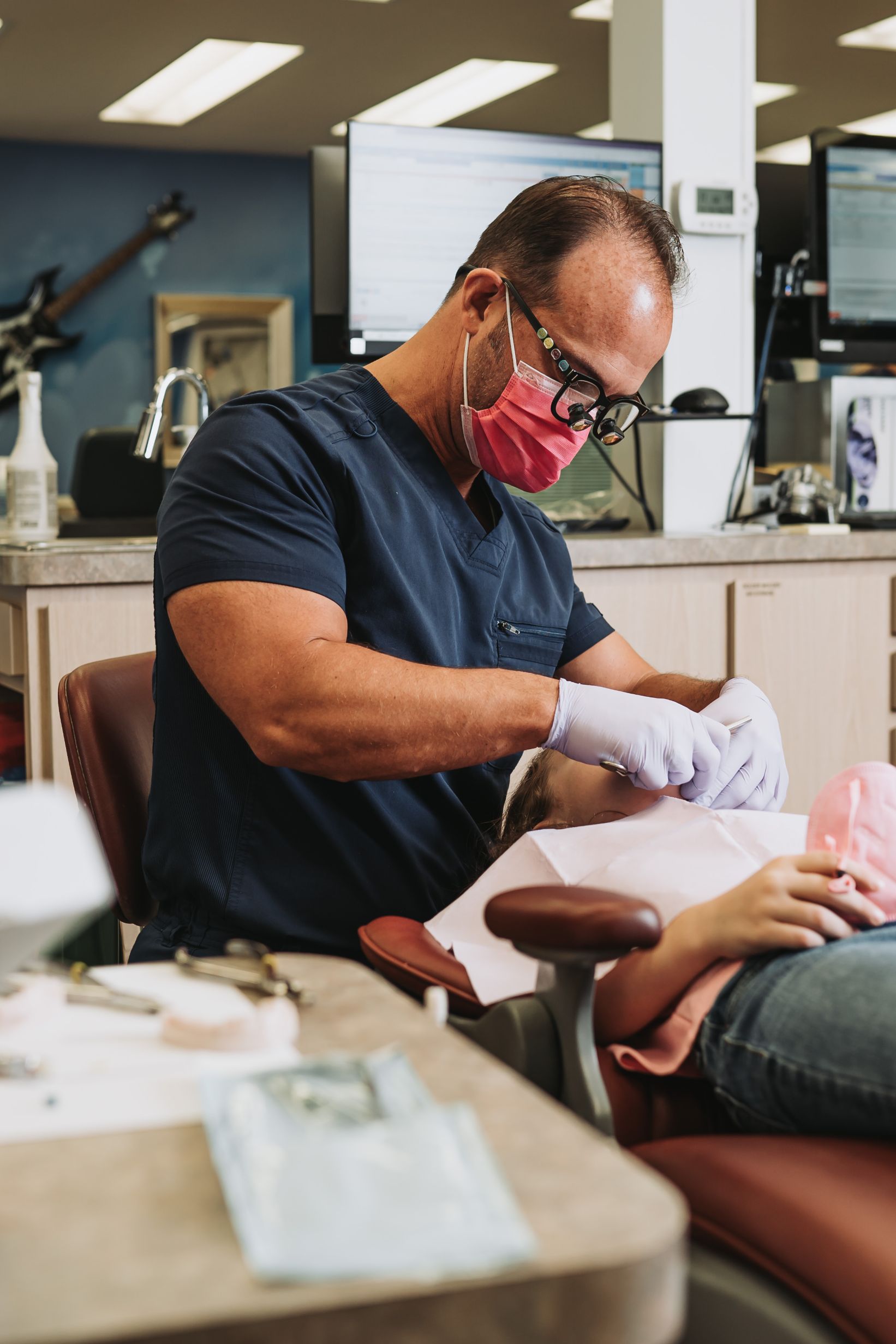Why Is Early Orthodontic Treatment Important?
It is recommended by the American Association of Orthodontists that children should have an orthodontic evaluation by the age of seven. By this age, the majority of children have a mix of baby and adult teeth, allowing our orthodontists to accurately monitor, diagnose, and correct any developing issues. The upsides of early orthodontic treatment are manifold. We can correct jaw growth, bite problems, and space issues to help permanent teeth come in evenly. This will reduce the chances of extractions, braces, retainers, and other orthodontic realignments in the future.
For some patients, starting treatment early may be more beneficial. An example of this is the treatment of narrow arches. With palate expanders, the arch can be widened so that the top and bottom teeth fit together more properly and other issues can be addressed in the second phase of treatment. Some common signs your child may need to see an orthodontist can include:
- Crooked, uneven, or overlapping teeth
- Large gaps between teeth
- Overcrowded teeth
- Prominent overbite or underbite
- Excessive mouth breathing, thumb sucking, or tongue thrusting
- Premature or delayed loss of baby teeth
- Difficulty chewing, biting, or drinking
We tend to take a conservative approach to early treatment, meaning that orthodontic treatment is only administered in cases where it is needed. Nevertheless, Dr. Baum and Dr. Blanck would both love to regularly monitor the growth and development of your child’s jaw and teeth. Sometimes, if detected at an early age, major orthodontic setbacks can be circumvented simply by introducing early appliances such as expanders.
If you are considering early treatment with braces or other appliances for your child or have noticed potential issues developing, schedule a consultation with Dr. Baum or Dr. Blanck. If you find it challenging to make it into the office, we also offer virtual consultations.
Types Of Braces For Kids In Connecticut
The type of braces your child needs will depend on their individual orthodontic needs. Baum Braces offers two options for braces for kids: traditional metal braces and ceramic braces.
The most common type of braces is traditional metal braces. They are made of high-quality stainless steel and the brackets are attached to the front of the teeth. A thin wire runs through the brackets and is secured with rubber bands.
A more discreet option is ceramic braces. These are made of a ceramic material designed to blend in with your natural tooth color and are less visible than traditional braces. Ceramic braces function in the same way traditional braces do and have the same level of effectiveness.
Deciding which option is right for your child will depend on their individual needs and preferences. Dr. Baum and Dr. Blanck will be able to advise you on the best choice for your child during the initial consultation.
What To Expect When Getting Braces
The process of getting braces is designed to be seamless and fun! During the first appointment, your orthodontist will examine your child’s teeth and bite and take x-rays, photos, and impressions of their teeth. He will ask basic questions that cover what you and your child are looking to get out of orthodontic treatment. Our team will also help you work through your options and decide what is best for your child.
Once a course of treatment is decided, your child is ready for braces! Most of the time, your child can get their braces put on that same day, saving you an extra trip to our office. Follow-up appointments are regularly scheduled after the braces have been put on so that we can check in on your child’s progress and make adjustments. These adjustment appointments are key to ensuring that your child progresses throughout treatment and that consistent pressure is being applied by the braces to keep your child on their way to a straighter smile.
Getting braces is a big step, but it doesn’t have to be complicated. Both Dr. Baum and Dr. Blanck have obtained specialized training in evaluating and treating dental irregularities and know how to keep your child involved and having fun with their treatment. Our team can assist you in determining whether braces are appropriate for your child and developing a treatment plan that meets your child’s specific needs.


